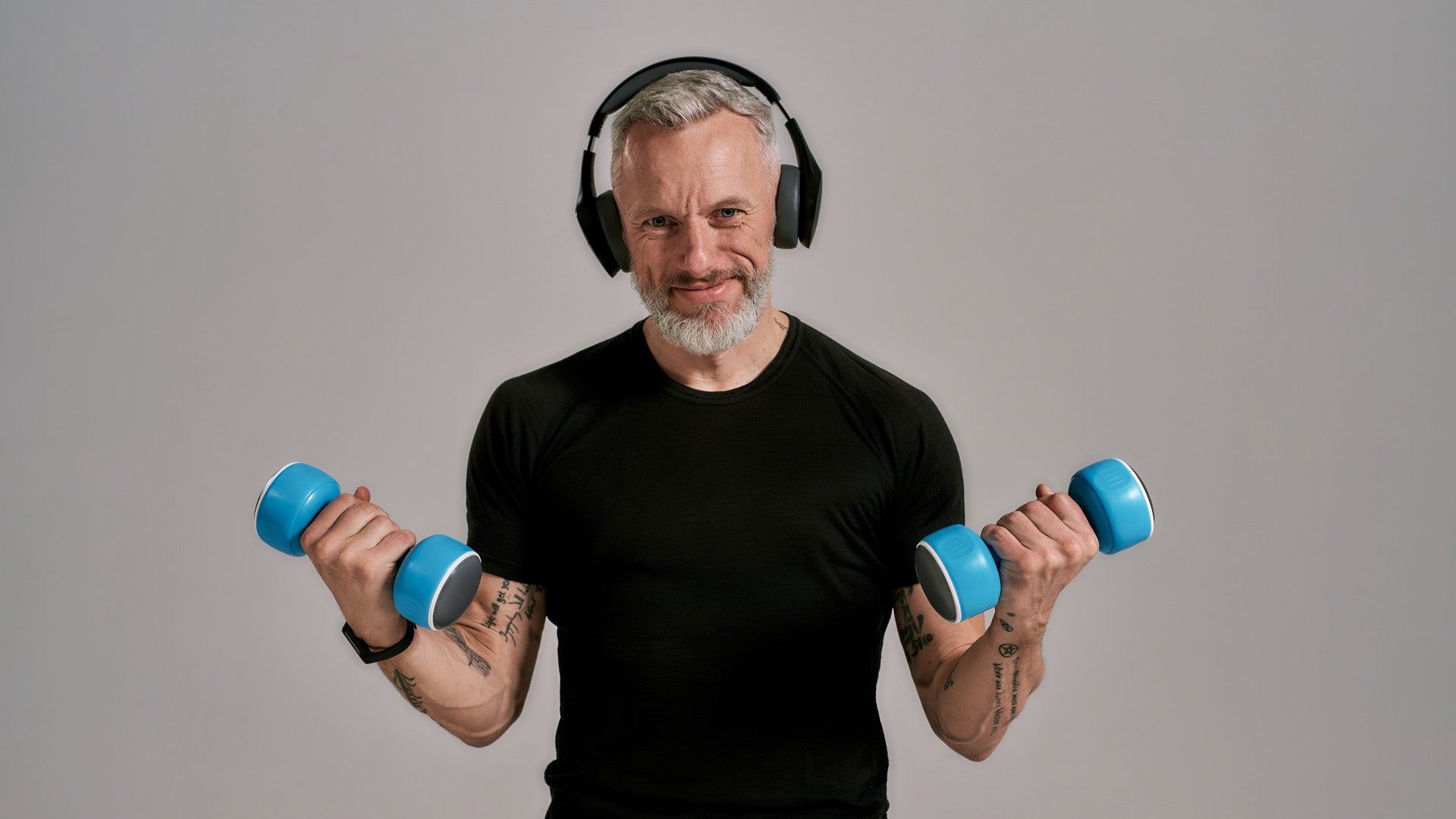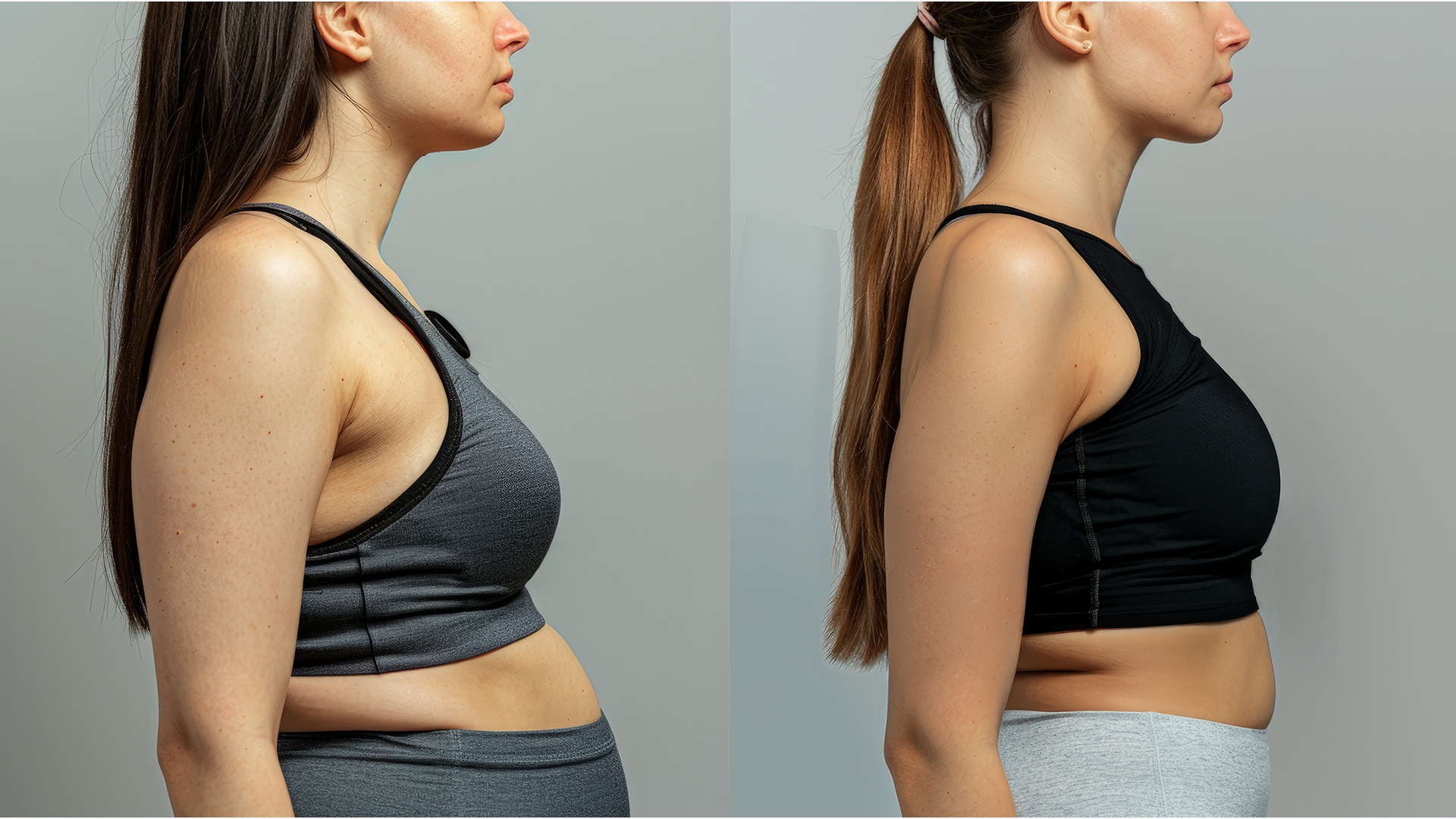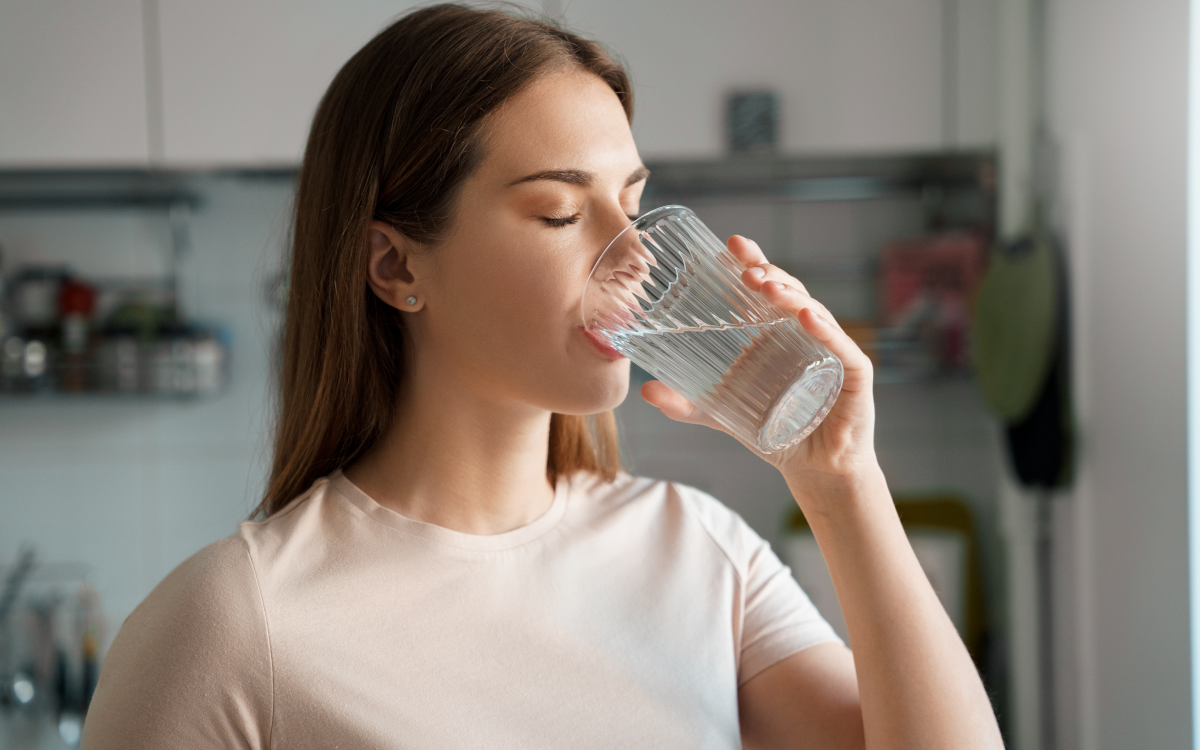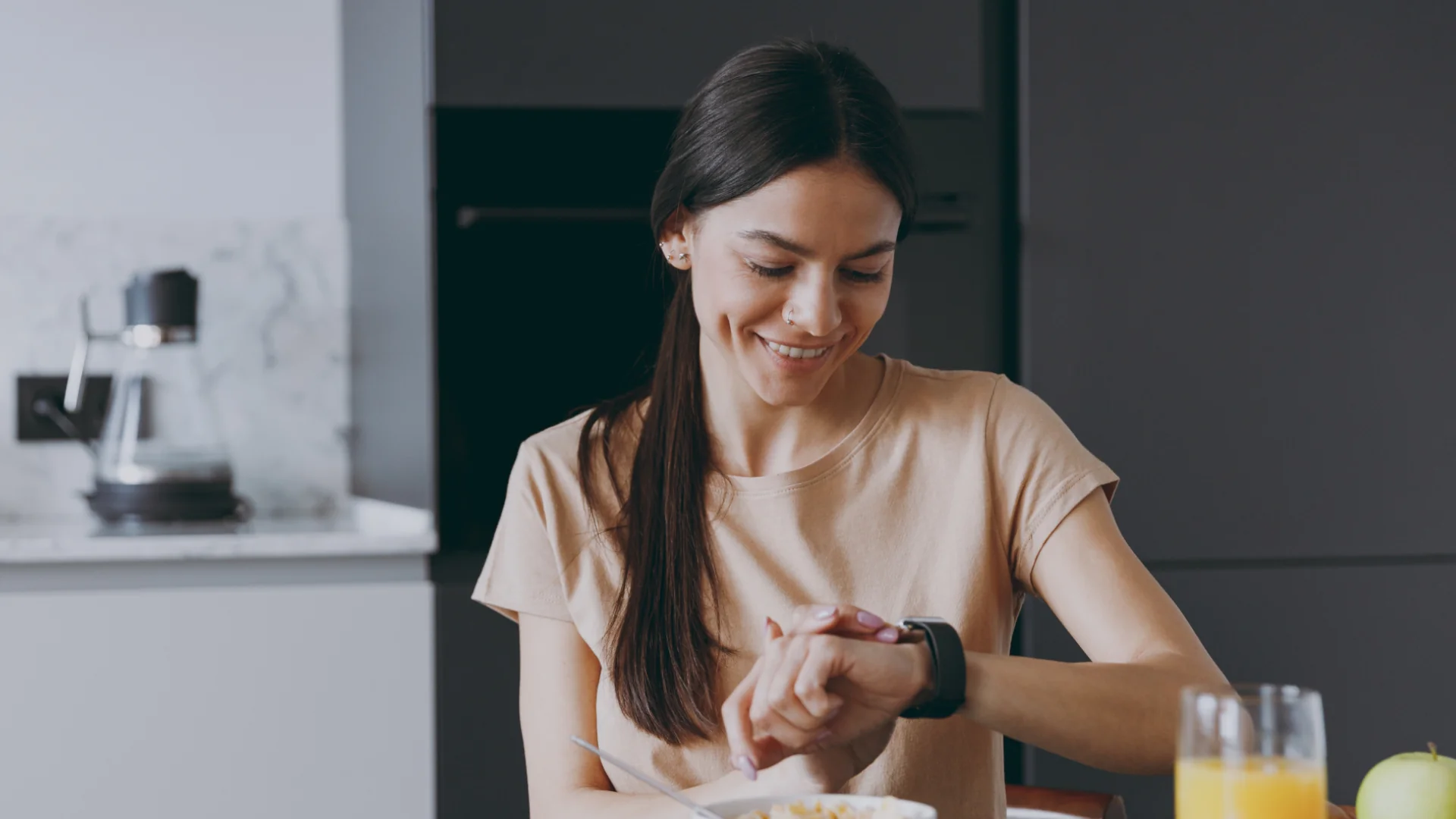Things you’ll learn in this blog |
It might seem impossible. The idea of trying to lose weight after 50. But trust us when we say weight loss is totally possible—and we're going to show you how.
Sure, it's cliche—but health really is wealth—so let's invest.
Here, we're going to cover exactly why people gain weight post-50 (you're not alone, it's very common) while pinpointing the best ways to get you started on your weight loss journey. Plus, we'll share some advice on supplements to help speed up the process.
Forget what you think you know and get ready to take on weight loss with new knowledge and support. We're with you every step of the way.
Let's go, go, go.
Why you gain weight post-50
Did you know? According to recent statistics, nearly 42% of adults aged 60 and above in the United States are classified as overweight or obese, leading to numerous health concerns, including heart disease, diabetes, and joint problems. That's nearly half.
Of course, eating patterns, sleep routines, physical activity levels, genetics, health and other factors can influence weight gain, making it difficult to lose weight at this age.
But research has also found that cultural attitudes towards ageing can lead to older adults being less active and maintaining poor diets. And, when you think about it, this is an interesting angle no one really talks about (except us).
That said, it does raise some questions—biologically speaking—about what goes on in our bodies after 50 that can lead to weight gain too.
We're going to cover some of these reasons below.
Metabolism

So, does metabolism affect weight loss? Well, yes, but it isn't as simple as just that.
For women, weight gain after 50 may continue at about the rate of 1.5 pounds each year.
As we get older, there’s a natural decline in muscle mass and strength, with it decreasing by 1 to 2% per year. Muscle strength also drops by 1.5-5% per year after the age of 50.
Did you know? Our basal metabolic rate (BMR) tends to lower, which can contribute to weight gain and make it more challenging to lose weight.
The basal metabolic rate refers to the minimum amount of energy needed by the body to carry out essential processes while at rest and during fasting. These processes include cell repair, temperature regulation, and organ function.
BMR is influenced by several factors, including weight, sex, body composition, age, and height.
It’s important to note that muscle mass is more metabolically active than fat, meaning it burns more calories even at rest. So, a reduction in metabolism results in a lower BMR and, consequently, fewer calories burned at rest.
Understanding these factors can help us navigate the complex dynamics of weight gain and body fat as we age. It's actually great fuel for change.
Hormones
This is a big one.
As you may know, hormonal weight gain is a thing.
Hormonal changes in women over 50, particularly during menopause, can influence weight gain.
The decrease in oestrogen production during menopause can lead to an increase in abdominal fat, otherwise known as belly fat which is one of the hardest areas to shift weight from.
Oestrogen plays a role in regulating metabolism and controlling appetite. It affects the way the body stores and uses fat, and it drops as women approach menopause.
Declining oestrogen levels are linked to a decrease in muscle mass and a slower metabolic rate. Where does it leave you? With an increased chance of weight gain.
It's true that hormonal changes can also lead to insulin resistance, which is a process by which the body stores more fat that leads to weight gain.
Plus, changes in cortisol levels can lead to increased appetite and contribute to belly fat and excess pounds.
Now that we've discussed some of the science behind weight gain in your 50s, it becomes increasingly clear that you need to make some lifestyle adjustments during this period of life to offset the natural body changes that occur.
And all these lifestyle changes are totally possible, within your grasp and can be started today.
Let's dive into the how.
How to lose weight after 50
How exciting! Real, actionable ways to lose weight that work.
There are a ton of ways to lose weight after 50. And you can learn some new skills along the way too.
How to Exercise to Lose Weight
Staying physically active over 50 has a bunch of benefits, including improved muscle strength, cardiovascular health, flexibility, and lower risks of chronic disease. Oh, and it also helps with balance and bone density.
Hitting a certain age doesn't mean you're resigned to losing muscle mass and wrangling with cardiovascular disease.
In fact, being aware and taking steps to prevent this from happening is the best course of action you can take.
Let's take a look at the kind of body-boosting exercises you can try.
How to Use Strength Training to Lose Weight

Firstly, don't worry, you're not going to balloon out like a bodybuilder.
Promise!
This kind of training will actually build lean muscle mass, a better metabolism, and may well promote weight loss as a result.
What is strength training, exactly? Well, it's all about performing physical exercises designed to improve strength and endurance by working against resistance or weights. The main goal is to increase muscle mass and muscle strength.
You can achieve this by using your own body weight, weight machines, free weights or resistance bands, and targeting major muscle groups.
Let's take a look at some exercises you can do at home as easily in the gym.
Important (FYI)
- First, check in with a healthcare professional to tell them about your intention to start a new exercise routine
- Discuss any new exercise routine with a personal trainer so they can make you a bespoke plan whilst showing your correct form
- How often should you try these exercises?
Perform two to three sets of 8 to 12 repetitions for each exercise. This rep range helps promote muscle growth and strength development while also providing cardiovascular benefits.
Squats
Stand with feet shoulder-width apart, as if sitting back in a chair. Lower your body then return to a standing position.
Lunges
Step forward slowly with one leg, making sure to keep your knee at a 90-degree angle. Return to the starting position, then swap legs and repeat.
Push-ups
Start in a plank position with hands shoulder-width apart. Slowly lower your chest to the ground holding your form, then push back up.
For those who struggle with this position, try placing your knees on the ground and repeating instead.
Dumbbell rows
Bend forward at the waist with your knees slightly bent. Start to pull the dumbbells up to your waist at the same time as keeping your elbows close to your body.
How Often Should I Practise?
It's advisable to do strength training at least two to three times per week for weight loss— it doesn't need to be every day.
This frequency allows for the right amount of recovery time and muscle adaptation while making sure you're consistently training.
How to do Cardio to Lose Weight
Cardio exercises burn calories as well as improve and maintain heart health.
If you get your heart beating faster and more blood flow and oxygen delivery to the body, your blood vessels will be in a much better state to fight and prevent blood vessel as well as heart disease.
Did you know? Cardio also helps with improved mental health as all those ‘feel good’ hormones known as endorphins are released. Cognitive function improves, too, and your feelings of well-being can rocket.
Not only this, but getting involved with a bit of cardio can help your energy levels.
As if you need any more convincing, let's take a look at what kind of activities you can try to burn those calories and shed any excess weight.
Brisk walking
Take a walk at a pace that raises your heart rate. Start slowly and with a short distance at first, then gradually increase how far you go and the intensity of walking.
TIP: A walking buddy is a great idea as you can make it a fun social occasion and you can motivate each other.
Cycling
Ride a bicycle outdoors or use a stationary exercise bike at home or the gym.
Start by cycling a short distance at a slow speed, then gradually increase the intensity, duration, and distance as your fitness level grows.
For exercise at home or the gym, adjust the resistance or incline over time to raise your fitness levels and help fuel your weight loss efforts.
Dancing

A great option for those who don't like cycling or walking, dancing can also be a social occasion where you can join a dance class, dance at home with a friend or follow an online video to get a good cardio workout.
So, start cutting shapes to your favourite tracks and you’ll burn more feelgood calories than you can possibly count.
Stuck for dancing inspiration? Try our body-grooving workout mix:
How Often to do Cardio to Lose Weight
The American Heart Association and the Centers for Disease Control and Prevention (CDC) recommend the following guidelines for cardio exercise.
How many minutes?
Aim for at least 150 minutes of moderate-intensity aerobic activity per week or 75 minutes of vigorous-intensity aerobic activity per week. To lose weight, gradually dial up the duration with time.
Frequency
Try to perform your cardio at least five days a week, ideally more. You don't need to push it on all days, but getting in some healthy long walks, some cycling, and maybe one dance class is enough.
Intensity
For moderate-intensity cardio, you should aim to work at a level where you feel a bit breathless but can still talk comfortably.
For higher-intensity cardio, you should feel your heart rate increasing, may break a sweat and find it hard to hold a conversation.
Variety
Mix up your cardio to avoid overuse of certain muscles or injury. Some options could include brisk walking, jogging, cycling, swimming, dancing, or using cardio machines like the elliptical or rowing machine. Variety is the spice of life, after all.
An Exercise Plan to Lose Weight at 50
We've put together an example of an exercise plan to lose weight that spans one week.
Check with your healthcare provider and personal trainer before you try it out.
Day 1:
Warm-up: Five to 10 minutes of light cardio, such as walking or cycling.
Cardiovascular exercise: Brisk walk or jog for 30 minutes.
Strength training: Perform two to three sets of 10 to 12 repetitions of exercises targeting major muscle groups, such as squats, lunges, push-ups, dumbbell rows, and overhead presses.
Cool-down: Five to 10 minutes of stretching exercises.
Day 2:
Enjoy a well-deserved rest day or engage in light activities like walking or gentle stretching.
Day 3:
Warm-up: Five to 10 minutes of light cardio, such as jumping jacks or marching in place.
Cardiovascular exercise: Cycling or swimming for 30 to 45 minutes.
Strength training: Perform two to three sets of 10 to 12 repetitions of exercises focusing on different muscle groups, such as bicep curls, tricep dips, chest presses, lateral raises, and planks.
Cool-down: Five to 10 minutes of stretching exercises.
Day 4:
Again, enjoy a well-earned rest day or engage in light activities like walking or gentle stretching.
Day 5:
Warm-up: Five to 10 minutes of light cardio, such as jumping rope or walking uphill.
Cardiovascular exercise: Take a dance class or do a high-intensity interval training (HIIT) workout for 30 minutes.
Strength training: Perform two to three sets of 10 to 12 repetitions of exercises, targeting major muscle groups, using resistance bands or weight machines.
Cool-down: Five to 10 minutes of stretching exercises.
Day 6:
Yes, another rest day. And, relax.
Day 7:
Active rest day: Get involved in low-to-moderate intensity activities like yoga, Pilates, tai chi, or gentle swimming. Lovely.
The Best Diet to Lose Weight After 50
Losing weight after a certain age can be a little more challenging, but adopting a healthy diet can greatly help you get there quicker.
Here are some rules of what to eat:
A balanced and calorie-controlled diet
Focus on consuming nutrient-dense foods while keeping portion sizes in check. This includes a variety of fruits, vegetables, lean proteins, whole grains, and healthy fats.
Choose whole, unprocessed foods
Opt for minimally processed foods that are rich in nutrients and free from added sugars, unhealthy fats, and artificial additives. This can help support weight loss and overall health.
Get lean protein

Protein is important for preserving muscle mass and supporting weight loss. Getting more protein into your diet and being mindful of choosing sources of lean protein like dairy, poultry, fish, and legumes is ideal.
Limit added sugars and refined carbs
This is a general rule for a good balanced diet anyway, but trying to minimise foods and drinks that are high in added sugars, refined grains, and unhealthy fats is a great idea when you want to drop pounds.
Desserts, pastries, sugar-sweetened beverages and white bread are all super processed and contain large amounts of sugar, so avoid them
Portion control
Pay attention to portion sizes to prevent overeating. Use smaller plates, bowls, and utensils to help control portions and try eating slowly, concentrating on eating bites so that your stomach can feel full quickly.
Aim to fill half your plate with fruits and vegetables, one-quarter with lean proteins (such as poultry, fish, beans, or tofu), and the last quarter with whole grains—things like whole wheat bread, quinoa, and brown rice.
Regular eating pattern
Getting into a regular eating pattern is the best way to promote digestive health, help stabilise blood sugar levels, and provide consistent energy levels across the day, among other reasons.
What is a Good Healthy Eating Plan for Weight Loss?
We've put together a healthy eating plan for a week you can try. But, always check with your dietitian before making changes to your diet.
Monday
Breakfast: Greek yoghurt with berries and nuts, whole-grain toast.
Snack: Carrots with hummus.
Lunch: Grilled chicken salad with mixed vegetables, avocado, and a light vinaigrette dressing.
Snack: Apple slices with almond butter.
Dinner: Grilled salmon with roasted vegetables and quinoa or brown rice.
Tuesday
Breakfast: Oatmeal with sliced banana and almond milk.
Snack: String cheese with grapes.
Lunch: Turkey and cheese wrap with lettuce, tomato, and mustard.
Snack: Cottage cheese with chopped pineapple.
Dinner: Baked chicken breast with roasted sweet potatoes and mixed vegetables.
Wednesday
Breakfast: Veggie and cheese omelette, whole-grain toast.
Snack: Edamame.
Lunch: Grilled tuna salad with mixed greens, cucumber, and tomato.
Snack: Hard-boiled egg.
Dinner: Broiled shrimp with zucchini noodles and marinara sauce.
Thursday
Breakfast: Smoothie bowl with Greek yoghurt, mixed berries, and granola.
Snack: Baked apple chips.
Lunch: Chicken and vegetable stir-fry with brown rice.
Snack: Cucumber slices with tzatziki.
Dinner: Grilled pork tenderloin with apple and fennel slaw.
Friday
Breakfast: Avocado and egg toast.
Snack: Roasted chickpeas.
Lunch: Tuna avocado salad with mixed greens and a light vinaigrette dressing.
Snack: Bananas with peanut butter.
Dinner: Baked cod with roasted Brussels sprouts and brown rice.
Saturday
Breakfast: Breakfast burrito with scrambled eggs, black beans, salsa, and avocado.
Snack: Air-popped popcorn.
Lunch: Roasted vegetables and quinoa salad.
Snack: Peach slices with Greek yoghurt.
Dinner: Beef kebabs with grilled vegetables.
Sunday
Breakfast: Whole-grain waffle with fresh berries and light syrup.
Snack: Trail mix with nuts and dried fruit.
Lunch: Spinach and feta stuffed chicken, roasted mixed vegetables.
Snack: Sliced bell peppers with guacamole.
Dinner: Vegetable and beef stir-fry with brown rice.
Does Staying Hydrated Help with Weight Loss?

Yes. Absolutely.
And here's why.
Drinking enough water is important when trying to lose weight for several reasons:
Appetite suppression
Did you know? Water can act as a natural appetite suppressant.
When the stomach senses that it's full, it sends signals directly to the brain to tell it to stop eating.
Calorie burning
Does drinking water help to burn calories?
Let’s explore.
Studies suggest that increasing water intake can have a temporary effect on metabolism by boosting it, which results in an increase in calorie burning and even calorie burning at rest.
Hydration and energy levels
Staying hydrated is crucial for maintaining optimal energy levels and maximising physical performance during exercise.
When you're dehydrated, it can result in a serious lack of energy, so getting active can be less enticing and hard to complete.
Replacing high-calorie drinks
It seems like common sense, but drinking water in place of calorie-laden beverages like sugary sodas, juices, or energy drinks can chop down your overall calorie intake.
The result?
A potential calorie deficit, which may well lead to weight loss.
Improved digestion
Adequate water intake is necessary for healthy digestion. It banishes constipation and assists in the proper breakdown and absorption of nutrients.
So, How much water should you drink?
It's generally recommended to drink at least 64 ounces (8 cups) of water per day, though climate, overall health, and activity levels are factors that may influence the amount.
Does Sleep Help with Weight Loss?
Getting enough sleep is crucial.
Research suggests that sleep plays a role in weight loss for people over 50.
Lack of sleep has been associated with both a higher BMI and weight gain. When you have broken sleep or don’t get enough hours of sleep, your hormones can become unbalanced. In turn, this can lead to an increase in appetite and, interestingly, a preference for unhealthy, fatty foods.
Getting the right amount of sleep helps those hormones regulate, and once they’re regulated, your hold of hunger and fullness can level.
Aim for seven to nine hours of quality sleep each night. Monitor your sleep with an app, wearable technology or other technology to understand how much deep sleep and REM you are getting.
Perhaps if you’re getting fewer hours, but the quality is high, this will get you rolling down the right tracks.
Fasting for Weight Loss
When considering fasting for weight loss, it's essential to approach it with caution and consult with a healthcare professional.
Let's have a quick look at some options for you to try.
Intermittent Fasting
This approach involves cycling between periods of fasting and eating. There are different intermittent fasting protocols, like the 16:8 method (fasting for 16 hours and having an 8-hour eating window), the 14:10 method, or the 5:2 method.
It's important to note that intermittent fasting may not be suitable for everyone, especially those with specific health conditions or on medication. So, guidance from a healthcare professional is advised.
Time-Restricted Fasting
It sounds pretty serious, but all it means is daily eating within a specific window of time.
For example, a person might choose to fast for 12 to 14 hours a day and eat all their calories for the day within that time frame. This means that calorie intake is regulated and may lead to weight loss.
Quick Tips
- Get advice from a P.T. before undertaking any of these exercises so you can learn the correct form
- Pair up with a buddy so you can exercise together and help motivate each other
- Get a pedometer or a smartwatch so you can measure how many steps you do a day. Aim for 10,000
- Find ways to exercise throughout the day, whether it’s doing some gardening or walking to the shops rather than driving
- Don't skip meals—you might end up snacking or overeating when you do eat
- Share your weight loss diet with a friend and either do it together or call them for motivation
Supplements and Weight Loss
Did you know? There’s another way to help speed up your weight loss efforts.
There's a ton of science behind weight loss supplements supporting their effectiveness when combined with a balanced diet and exercise. So, why not try out the new powerful slimming formula of PhenQ.
This is a unique new weight loss supplement that burns stored fat, suppresses your appetite, and boosts your energy levels all in one.
So, why not kickstart your weight loss journey with a little extra help today? You can do it.



